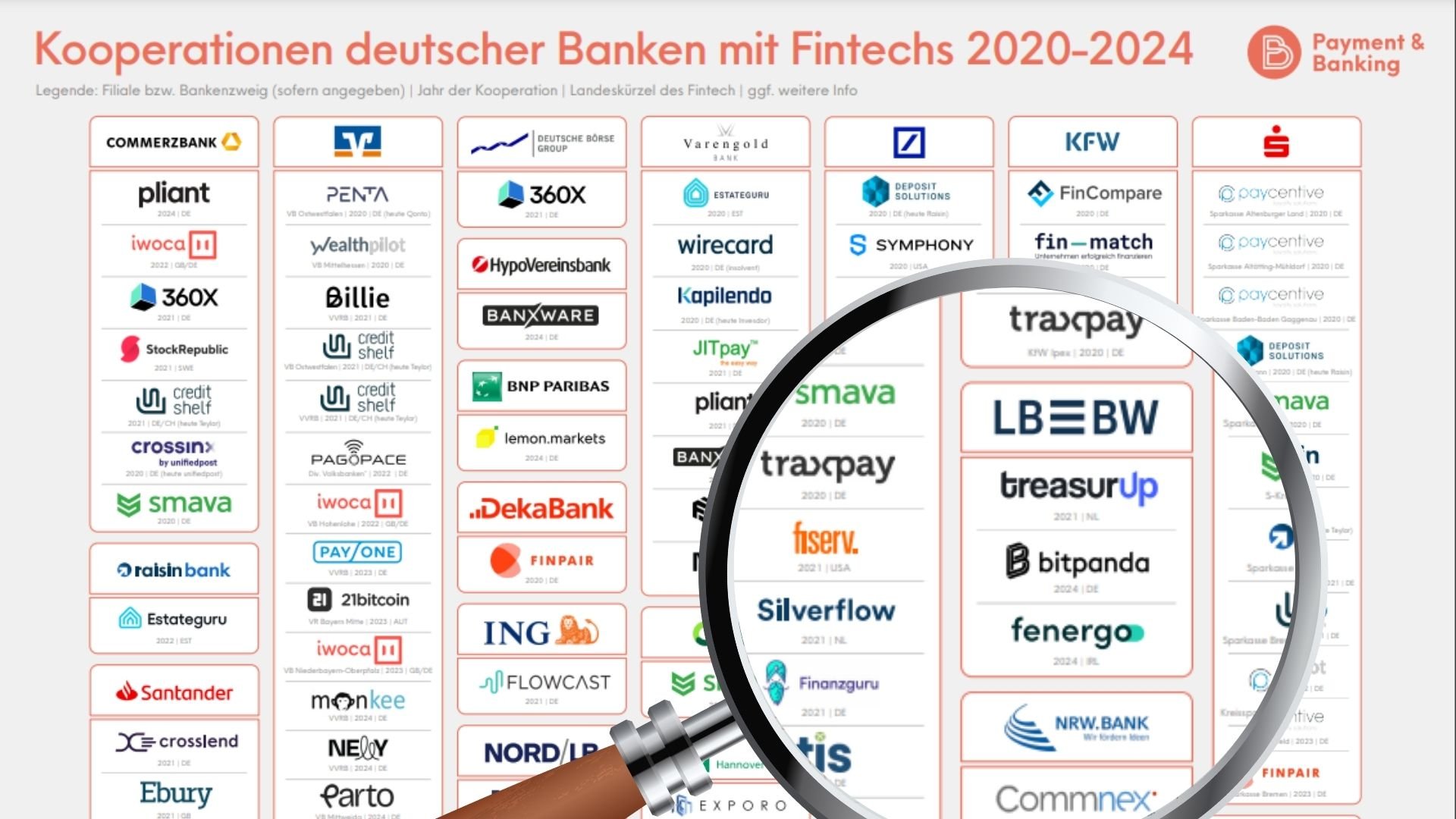Teil 1 der Serie: Wie funktioniert Bitcoin?
Kaum ein Thema wird derzeit so intensiv und kontrovers diskutiert wie Bitcoin. Während Bitcoin-Anhänger für die Kursentwicklung des Kryptowerts ein exponentielles Wachstum vorhersagen, verweisen Kritiker darauf, dass Bitcoin nichts anderes als „Spielgeld“ sei. Unabhängig von den hitzigen Debatten ist es eine Tatsache, dass Bitcoin in Schwellen- und Entwicklungsländern immer mehr Zuwendung findet. Auch in Industrieländern steigt die Nutzung kontinuierlich an. Hier wird Bitcoin allerdings weniger als Zahlungsmittel, sondern mehr als Wertaufbewahrungsmittel, also eine Art “digitales Gold”, gesehen.
Doch nicht nur Bitcoin erfreut sich einer immer größer werdenden Beliebtheit. Auch die dahinterstehende Distributed-Ledger-Technologie (DLT) — häufig auch als Blockchain bezeichnet — wird mehr und mehr verwendet, sowohl für Anwendungsfälle im Finanzsektor als auch in der Industrie. Allerdings wird die weitere Verbreitung von Kryptowerten im Speziellen aber auch der DLT im Allgemeinen häufig vom fehlenden technologischen Grundverständnis dieser fairerweise nicht ganz einfach zu verstehenden Technologie behindert.
Diese dreiteilige Serie zielt darauf ab, Bitcoin, als erste Anwendung einer DLT, und die dahinterstehende Technologie für eine breite Zielgruppe ohne technologisches Vorwissen zu erläutern und in diesem Zusammenhang die revolutionären Kernprinzipien der DLT zu diskutieren.

Einleitung
Bitcoin ist ein dezentral-organisierter Kryptowert, der auf einer dezentralen Datenbank, einer Blockchain, basiert. Dezentral bedeutet in diesem Zusammenhang, dass das Zahlungssystem inklusive Geldschöpfung und Geldtransfer nicht von einer zentralen Instanz gesteuert wird. Ein Kryptowert ist im Prinzip eine Art zensurresistentes, dezentrales, digitales Geld, das durch kryptografische Hashfunktionen gesichert wird.
Die Geburtsstunde
Bitcoin wurde während der großen Finanzkrise im Jahr 2008 geboren, als Satoshi Nakamoto das Bitcoin-Whitepaper veröffentlichte (Nakamoto, 2008). Ob hinter dem Namen Satoshi Nakamoto nur eine einzelne Person oder eine größere Gruppe steckt, ist bis heute unbekannt und eines der größten Geheimnisse hinter Bitcoin. Die Grundidee Nakamotos war es damals, ein digitales Geldsystem zu erschaffen, mit dem Zahlungen zwischen zwei Parteien möglich sind, ohne dass eine dritte, zentrale Partei, wie z.B. eine Bank, in den Bezahlvorgang involviert ist. Zusätzlich löst Bitcoin erstmals in einem digitalen dezentralen System das Problem des „Double-Spendings“ (Nakamoto, 2008).
Double-Spending bedeutet in diesem Zusammenhang, dass Geld doppelt ausgegeben werden kann. Bei physischem Geld gibt es dieses Problem nicht, da dieselbe Banknote nicht zwei Mal gleichzeitig ausgegeben werden kann. Bei digitalem Geld könnte eine zentrale Institution, der alle Transaktionen bekannt sind, wie beispielsweise eine Bank, Double-Spending unterbinden. Doch bei einem dezentralen digitalen Geldsystem, wie Bitcoin, gibt es eben gerade keine zentrale Institution. Nakamoto löst dieses Problem durch den Einsatz einer DLT und eines sogenannten Proof-of-Work-Konsens-Mechanismus, der später ausführlich erläutert wird.
Allgemeine Informationen zu Bitcoin
Insgesamt gibt es eine maximale Anzahl von 21 Millionen Bitcoin, von denen sich bereits 18,65 Millionen im Umlauf befinden (Coinmarketcap.com, 2021). Coin Metrics schätzt allerdings, dass bereits ca. acht Prozent (1,5 Millionen) der zirkulierenden Bitcoins nicht mehr zugänglich sind. Das liegt größtenteils daran, dass z.B. entweder der Private Key — eine Art PIN im Bitcoin-System — verloren ging oder keine Sicherung der Wallet — also des “digitalen Geldbeutels” — angefertigt wurde (Franek, 2019). Insgesamt gibt es aktuell etwas mehr als 6.000 Kryptowerte (Coingecko.com, 2021). Bitcoin ist nicht nur die älteste und bekannteste, sondern mit einer Marktkapitalisierung einer Billion US-Dollar auch bei Weitem die größte (Stand: 11.03.2021). Das tägliche Handelsvolumen lag innerhalb des letzten Jahres zwischen 15 und 178 Milliarden US-Dollar (Coingecko, 2021; Stand:11.03.2021). Die kleinste Bitcoin-Einheit nennt sich Satoshi und ist 0,00000001 Bitcoin groß.
Bitcoin-Blockchain und Hashfunktionen

Eine Blockchain kann man sich als eine Reihe von aufgestellten Blöcken vorstellen, die miteinander zu einer Kette verbunden werden. Beim Bitcoin enthalten diese Blöcke Daten über die Transaktionen des Netzwerks, allerdings können hier prinzipiell auch andere Daten als Transaktionsdaten gespeichert werden.
Die Blockchain bildet folglich eine komplette Transaktionshistorie ab und lässt sich nicht im Nachhinein verändern. Dadurch, dass jeder Netzwerkteilnehmer diese Blockchain auf seinem Computer gespeichert hat, kann sichergestellt werden, dass keine betrügerischen Aktivitäten stattfinden, wie z.B. Double-Spending oder Datenmanipulationen. Mit Hilfe der Blockchain wird dezentral ein Konsens über die tatsächlich stattgefundenen Transaktionen erreicht und als “Single Source of Truth” angesehen.
Innerhalb einer Blockchain gelten bestimmte Regeln, die eingehalten werden müssen und im sog. Protokoll festgehalten werden. Bei Bitcoin spielt hierbei die Hashfunktion SHA-256 eine wichtige Rolle. Ähnlich wie bei einer konventionellen mathematischen Funktion hat auch eine Hashfunktion einen Input und einen Output. Der Input kann unendlich groß sein und kann Zahlen, Buchstaben und Zeichen bis hin zu Dateien enthalten. Der Output ist allerdings immer gleich groß bzw. lang (64 Stellen) und besteht aus Zahlen und Buchstaben.
Um die Funktionsweise einer Hashfunktion zu veranschaulichen, wird der folgende Input benutzt:
Blockchain-Technologie ist cool #Btc
Der durch SHA-256 verschlüsselte Output würde dann lauten:
c062ec43027fb766571ac19722498b86383eaaf37ae401473ad7b04217575341
Würde auch nur ein kleines Detail am Input geändert werden, so würde sich direkt ein gänzlich anderer Output-Hash ergeben, jedoch immer mit der festgelegten Zeichenlänge von 64 Stellen. Das Spezielle an dieser Hashfunktion ist, dass es zwar äußerst leicht ist, aus dem Input den Output zu berechnen, es aber probabilistisch unmöglich ist (zumindest mit derzeitiger Technologie) vom Output auf den Input zu schließen (Narayanan et al., 2016). Warum diese Eigenschaft für Bitcoin essentiell ist, wird im Folgenden erläutert.
Transaktionsablauf und Wallets
Um Transaktionen zu tätigen ist zunächst ein Wallet notwendig, vergleichbar mit einer App auf dem Smartphone oder dem Computer. Ein weit verbreitetes Missverständnis ist es, dass ein Wallet zur Aufbewahrung von Bitcoins verwendet wird. Tatsächlich wird auf der Wallet allerdings der Private Key gespeichert, der zum Tätigen von Transaktionen zwingend erforderlich ist, und nicht die Bitcoins selbst.
Keys und Bitcoin-Adresse
Im Allgemeinen gibt es zwei Arten von Schlüsseln (engl. Keys), die bei einer Bitcoin-Transaktion zum Einsatz kommen. Dabei handelt es sich um den Private und den Public Key.
Der Private Key wird aus 2256 Möglichkeiten generiert, beispielsweise durch einen Zufallsgenerator, und hat eine ähnliche Funktionsweise wie die PIN eines Bankkontos. Mit diesem Private Key verifiziert der Eigentümer, dass er tatsächlich der Besitzer von Bitcoins auf einer bestimmten Adresse ist.
„Mit dem Private Key verifiziert der Eigentümer, dass er der Besitzer von Bitcoins auf einer bestimmten Adresse ist.“
Ein Private Key kann beispielsweise folgendermaßen aussehen:
fab389f660546c1b78f1b0bf77fd8e2953cf2cee25e75f3de7fe8630a8a1f663
Aus dem Private Key wird anschließend mit Hilfe einer Elliptischen Kurve, die in der Kryptographie häufig als Verschlüsselungsmethode genutzt wird, der Public Key erstellt.
Dieser sieht für den oben gezeigten Private Key folgendermaßen aus:
0324d09a7750f897386ca9378f0937118711494ca2c5de87a8c887227ce6cc94e9
Aus diesem Public Key wird wiederum unter Verwendung der Hashfunktionen SHA-256 und RIPEMD-256, die tatsächliche Bitcoin-Adresse erstellt[1]:
18aYy5r4w6ZvRtCugUS96csndStdeDygMh
Die Bitcoin-Adresse ist mit der IBAN eines normalen Bankkontos vergleichbar und ist öffentlich einsehbar, sobald das erste Mal Bitcoins auf diese Adresse transferiert wurden. Ein wesentlicher Unterschied zur IBAN ist allerdings, dass jeder öffentlich nachverfolgen kann welche Transaktionen über eine Adresse getätigt wurden. Welcher Partei die Adresse allerdings tatsächlich gehört, ist nicht nachvollziehbar (Pseudoanonymität). Allerdings ist es wichtig zu verstehen, dass es kein Problem darstellt, dass die Bitcoin-Adressen öffentlich einsehbar sind. Dies liegt daran, dass es dank der Hashfunktionen nicht möglich ist anhand des Public Keys oder der Bitcoin-Adresse auf den geheimen Private Key zu schließen (Hosp, 2019).
Quellen:
[1] Aufgrund der Kürze dieses Beitrags wird hierbei nicht gesondert auf die Funktionsweise der Hashfunktionen im Detail eingegangen. Zur Funktionsweise der Algorithmen siehe: https://www.youtube.com/watch?v=-Gix2bX9jZA.





